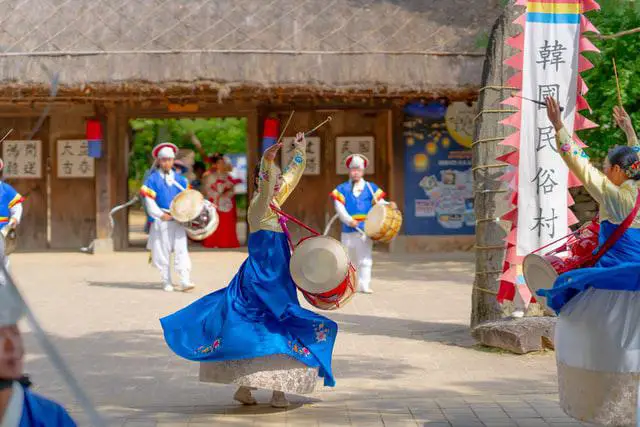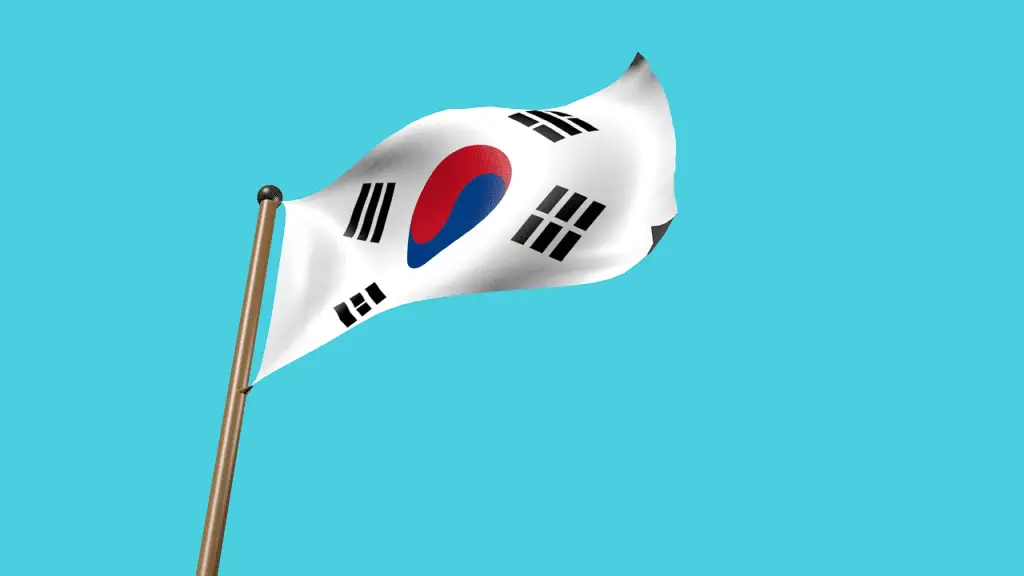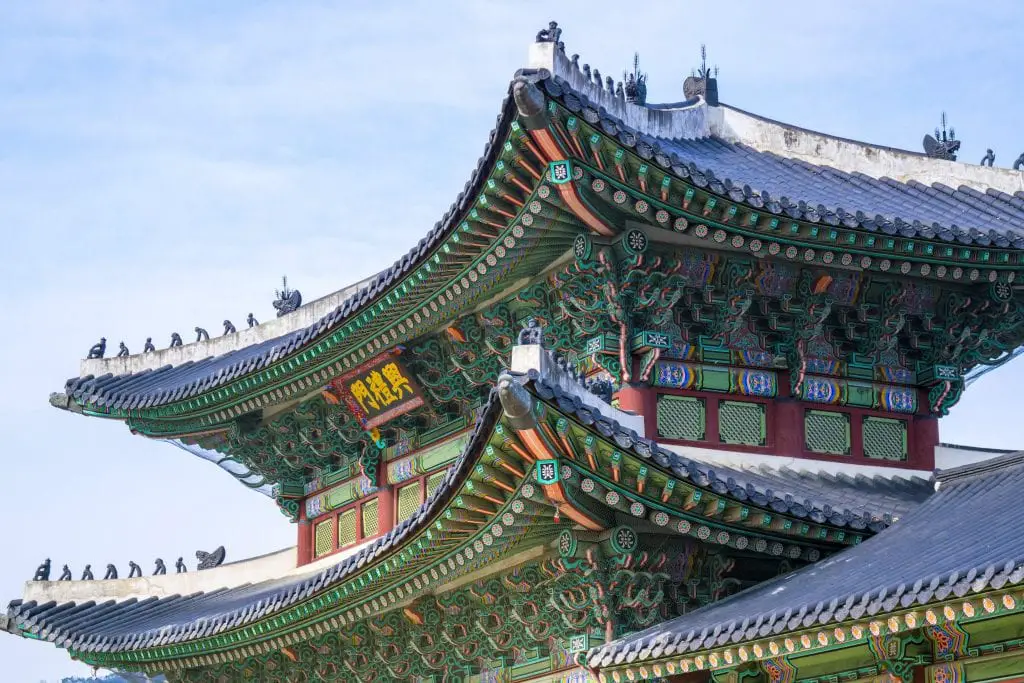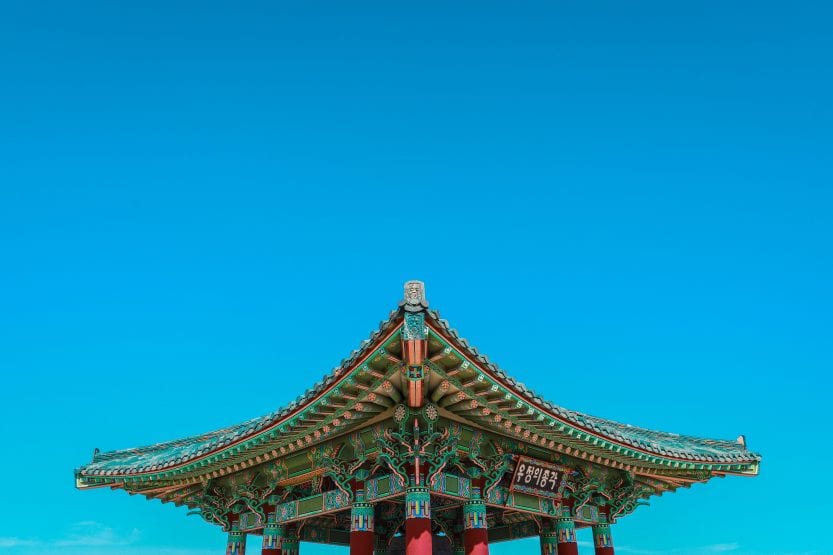Image Source: Unsplash
It’s a clear summer day. You are relaxing on the sandy shores of the beach. You watch mesmerized as the waves wash ashore. Further out in the distance, fisher-men stare at the sea that mirrors the vast sky above. There is a dreamy union of heaven and earth at the horizon. Was it the color blue, the color of calm and comfort, that your mind saw in this picture?
The popularity of blue as a primary color holds in Oriental Korea as well. A personal favorite of many, it’s seen on significant cultural symbols and landmarks. Fun fact, Koreans saw blue and green as variations of the same color and had only a single word to describe them. This is a surprising fact as blue grew to symbolize many important things in Korean culture. So, what does blue mean?
Popular Korean blues
Before getting into blue symbolism in Korea, let us look at where blue is popularly seen in the country. This should help further understand its meaning and reason for its use.
· Blue is one of the five Obangsaek or traditional colors of Korea. The other colors include red, yellow, white, and black.
· Both North and South Korean flags have parts of blue on them.
· The traditional Korean Taegeuk symbol, the concept of Yin and Yang, is a harmonious circle of red and blue.
· The Korean unification flag shows a blue silhouette of the Korean Peninsula, with no divisions, against a white background.
· The Azure Dragon or Blue Dragon is a legendary guardian creature that is of significance in most East Asian countries. In Korea, it’s known as Cheongnyong and has its unique origin story.
· Blue House, the present Korean presidential palace, is roofed by blue ceramic tiles. This is also the case with much of the roofs in South Korea.
· The Joseon Dynasty used to represent their virtuous scholarly men in the color blue as men of integrity.
· Blue, red, and yellow was also a common sight during the Joseon period. People wore such bright colors to weddings and festivals, even shamanistic rituals.

Image Source: Unsplash
Color symbolism in Korea
Any symbolism is subjective to the individual, context, and occasion, as stated by Soo Kim in an article published by The Hill. When you look at color from different contexts, it’s interpretations may turn out to have contradicting sentiments. A once calming and airy blue might turn into a depressing and cold one within seconds.
The meaning of color, integrated into Korean culture, has been affected by their age-old traditions and beliefs. The concepts of Yin and Yang and the more recent Western trends have also added to its complex meaning. Each of the Obangsaek represents the five elements and cardinal directions. It also signifies a season and guardian creature. Blue, as deep as the ocean, also takes on multiple meanings in as many contexts.
Eum or Yin
The red and blue Taegeuk symbol makes up the center of the South Korean flag, giving it the name Taegeukgi. Like the Yin and Yang symbol, this circle is also indicative of harmony and balance of the universe. The blue that forms the lower part symbolizes Eum or Yin, the passive and cool feminine energy. This contrasts perfectly with its lively and fiery red upper half. Some believe that the red and negative cosmic forces of blue are the North and South divisions of Korea.

Image Source: Pixabay
Elements, directions, and dragons
The lack of blue and green variations in ancient Korea gave rise to blue being associated with new beginnings and spring, storms, and rain. So, the element wood went along with the color perfectly, even though there has been a new word created for green now.
Blue also represents the Eastern direction. So, it only seems fair for ‘The Bluegreen Dragon of the East’, a fitting name for a guardian animal, to be its protector. Murals of the Goryeo tombs feature this Azure Dragon and other guardian creatures.
Blue roofs of the wealthy
The super-wealthy Koreans of the Goryeo period, flaunt their riches by laying their roofs with expensive ceramic blue (more greenish-blue) tiles. These tiles signified power and abundant wealth associated with the Korean palaces. The presidential palace in Korea is called ‘Blue House’. This references the traditional ceramic blue tiles that the rich use.
The fact that regular rich people of Korea could not afford the original ceramic blues shows the expensive nature of the tiles. Their homes were alternatively roofed with cheaper earthen tiles coated in blue. Although not the original, the blue color alludes to the wealth of the family residing in the house. These too were available only to the relatively richer folk.

Photo by Brady Bellini from StockSnap – Free photo of architecture castle (stocksnap.io)
A symbol of peace, blue symbolizes water and frost. At times, it means sharpness as in the Korean idiom ‘a (very) blue blade’.
As the world gets progressive in its thought daily, so does color symbolism in culture and society. Koreans have changed their ways of associating colors with societal stereotypes such as pink for girls and blue for boys. We see acceptance and open-mindedness in the Korean way of thinking. This associates many complex meanings to all colors, including blue. Despite these, through rituals and sacred symbols, Koreans continue to honor traditional blue symbolism even today.




